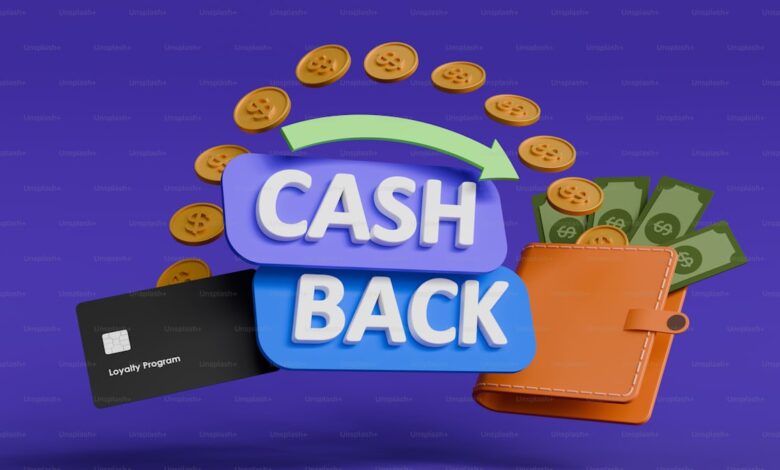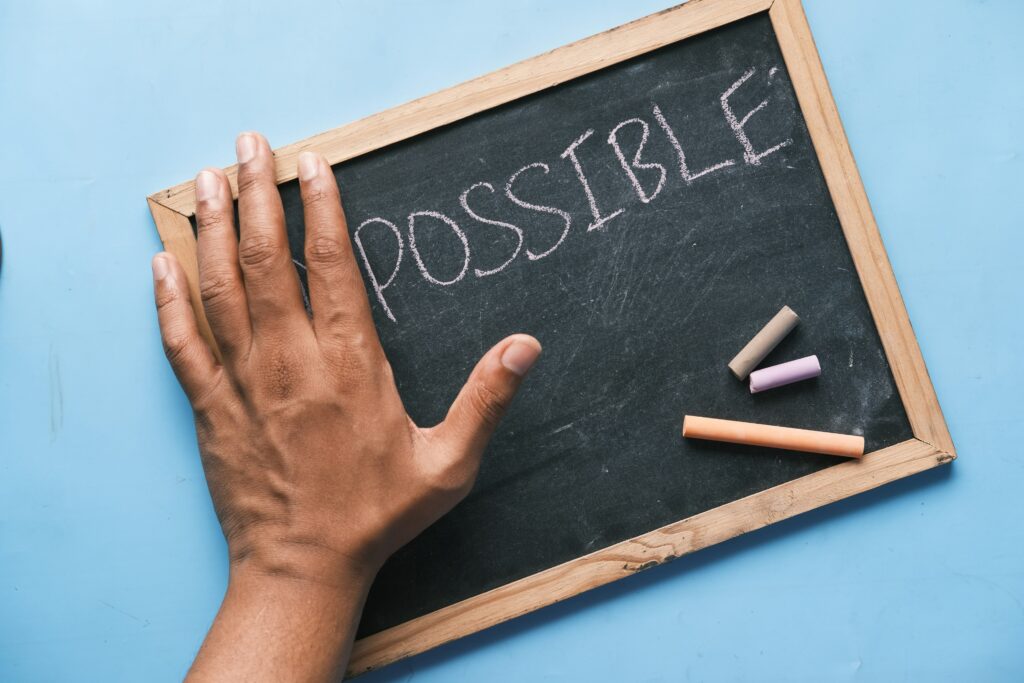How To Do A No Spend January Challenge

Look, I’m not gonna sugarcoat this January hits different when you check your bank account after the holidays. Between the gifts, the parties, the “just one more decoration” purchases, and those impulse buys that seemed like a brilliant idea at 2 AM on Amazon, your wallet is probably crying for help right now.
That’s exactly where I found myself a few years back. Fresh out of grad school with my finance degree in hand, I thought I had it all figured out. Spoiler alert: I didn’t.
December came and went like a tornado through my budget, leaving financial wreckage in its wake. My credit card statement looked like a horror movie, and I knew something had to change.
Enter the No Spend January Challenge your financial reset button that actually works.
What Is No Spend January
Here’s the deal. No Spend January is exactly what it sounds like you commit to not spending money on anything that isn’t absolutely essential for an entire month. We’re talking 31 days of financial discipline that’ll reset your spending patterns and give your bank account some breathing room.
Now, before you panic and think this means living like a hermit eating ramen in the dark, let me clarify. This isn’t about deprivation. It’s about being intentional with your money and breaking those autopilot spending habits that drain your account faster than you can say “add to cart.”
The basic premise is simple: You keep paying your bills, buying groceries, and covering necessities. What you don’t do is swipe that card for Starbucks runs, Target “just looking” trips, or those subscription boxes you forgot you even had.
Think of it as a financial detox. After the spending binge that is December, your money habits need a cleanse. Trust me on this I’ve guided hundreds of clients through this challenge, and the results are consistently mind-blowing.
The Real Benefits That’ll Make You Want To Start Today
Alright, let’s talk about what you actually get out of this challenge. Because let’s be honest, nobody wants to restrict their spending just for fun, right?
You’ll save actual money. Revolutionary concept, I know 🙂 But seriously, the average person who completes a No Spend January saves between $500-$1,500. That’s not pocket change that’s a vacation fund, an emergency cushion, or a solid debt payment.
From a behavioral finance perspective, you’re essentially rewiring your brain’s reward system. Every time you resist an impulse purchase, you’re strengthening your financial discipline muscle. It’s like going to the gym, but for your wallet.
Improved Money Mindset
You’ll discover your spending triggers. This is where it gets interesting. When you can’t mindlessly spend, you start noticing patterns. Maybe you shop when you’re stressed. Maybe you buy stuff when you’re bored. Maybe retail therapy is your go-to coping mechanism.
Once you see these patterns, you can actually address them instead of just throwing money at them.
Learning Valuable Financial Lessons
You’ll realize how much junk you don’t need. Ever wonder why your closet is full but you have “nothing to wear”? Yeah, we all do this. A no-spend month forces you to get creative with what you already own.
You’ll rediscover clothes you forgot about, finish products that were hiding in the back of your bathroom cabinet, and maybe just maybe appreciate what you already have.
The environmental impact shouldn’t be ignored either. Every item you don’t buy is one less thing eventually ending up in a landfill.
FYI, Americans throw away about 11.3 million tons of textile waste each year. Not buying stuff for one month? That’s a small but meaningful contribution to reducing waste.
How To Prepare For A No Spend January Challenge
Look, you can’t just wake up on January 1st and wing this. Well, you could, but you’d probably crack by January 3rd when you’re standing in line at your favorite coffee shop.
Define Your Personal Rules
Here’s where people get tripped up. They think no spend means absolutely zero spending, and that’s just not realistic unless you’ve somehow figured out how to photosynthesize. You need to establish clear boundaries that work for YOUR life.
Essential expenses that are always allowed:
- Rent or mortgage payments
- Utilities and phone bills
- Groceries (but we’ll talk strategy later)
- Transportation costs like gas or public transit
- Medications and healthcare needs
- Insurance premiums
- Debt payments
Non-essential expenses that are off-limits:
- Dining out and takeout
- Coffee shop runs
- Entertainment expenses like movies or concerts
- New clothes and accessories
- Home décor items
- Subscription boxes
- Impulse online shopping
Now, here’s where you need to be honest with yourself. Maybe you have a gym membership that you actually use religiously. Maybe you have therapy appointments that are non-negotiable. These might be “essential” for you even if they’re technically optional.
The key is to write down your rules BEFORE you start. Put them somewhere visible. Make them specific. “No unnecessary spending” is too vague. “No buying clothes unless something essential tears beyond repair” is specific and actionable.
Choose Your Timing Strategically
January is popular for a reason it’s right after the holiday spending madness, and everyone’s in that “new year, new me” mindset. But honestly? You can do this challenge any month that makes sense for you.
Avoid months with:
- Major holidays
- Birthdays (yours or close family members)
- Weddings or big events
- Planned vacations
- Major life transitions
You’re not setting yourself up to fail. You’re being strategic. If you’ve got your best friend’s wedding in March, maybe pick February or April instead. This isn’t about creating unnecessary stress it’s about building better habits in a sustainable way.
Build A Budget (Set A Concrete Financial Goal)
Here’s some real talk from my years in financial planning: vague goals produce vague results. “Save money” doesn’t cut it. You need a specific target that gets you excited and keeps you motivated when temptation strikes.
Maybe you want to save $1,000 for your emergency fund. Maybe you’re trying to pay off that annoying credit card balance. Maybe you’re building up your travel fund for a summer trip.
Whatever it is, write it down and calculate exactly how much you need to save each week to hit that target.
I had a client once who taped a picture of her dream vacation destination to her debit card. Every time she went to buy something unnecessary, she saw that picture and asked herself, “Is this latte worth delaying my trip?” Guess who went to Bali that year? 🙂
Preparing Your Budget And Pantry
You can’t stumble into this challenge unprepared. That’s like trying to run a marathon without training technically possible, but you’re gonna have a bad time.
Audit Your Current Spending
Before you start, you need to know where your money actually goes. Pull up your last three months of bank and credit card statements. I know, I know it’s not fun. But it’s necessary.
Look for patterns. How much are you really spending on coffee? On impulse Amazon purchases? On subscription services you barely use? Write it all down. The numbers don’t lie, even when we wish they would.
This exercise alone often saves people money because they discover subscriptions they forgot existed. That streaming service you signed up for to watch one show? Still charging you $14.99 monthly. Cancel it.
Stock Your Pantry Smart
One of the biggest challenges people face is grocery shopping during a no-spend month. You still need to eat (revolutionary, I know), but you want to minimize costs while maximizing what you already have.
Before the challenge starts:
- Take inventory of everything in your pantry, fridge, and freezer
- Create a meal plan using what you already have
- Make ONE strategic grocery trip to fill gaps
- Stock up on versatile staples like rice, beans, pasta, and canned goods
Here’s a pro tip from my own experience: shop the sales and use coupons like your life depends on it. Download apps like Ibotta or Fetch Rewards that give you cash back on groceries. These won’t require you to spend extra money you’re buying groceries, anyway, might as well get something back.
Plan your meals around what’s already in your kitchen. Got random ingredients that don’t seem to go together? Google “recipes with [ingredient list]” and you’ll be amazed what you find.
I once made an incredible stir-fry from vegetables I thought were past their prime and some sauce packets I’d hoarded from takeout orders. It became a regular meal in my rotation.
Delete Temptation From Your Phone
This might hurt, but it’s necessary. Delete shopping apps from your phone. ALL of them. Amazon, Target, your favorite clothing stores gone. Unsubscribe from promotional emails. Unfollow influencers who make you want to buy stuff.
Your phone is your biggest spending trigger. Studies show that mobile shopping has increased impulse purchases by 35% compared to desktop shopping. When the barrier to buying is literally one tap away, your willpower doesn’t stand a chance.
If deleting apps feels too extreme, at least log out of everything and remove saved payment information. Making the buying process more difficult adds friction that gives your rational brain time to catch up with your impulse.

10 Strategies To Survive A No Spend January Challenge
The difference between people who complete this challenge and people who give up by day five usually comes down to having solid strategies in place. Let me share what actually works.
1. Master The Art Of Meal Planning
This is non-negotiable, folks. Meal planning is your secret weapon against spending during this challenge. When you don’t have a plan, you end up hungry at 7 PM with nothing to eat, and suddenly that pizza delivery sounds VERY reasonable.
Here’s my weekly routine:
- Sunday morning: inventory check
- Sunday afternoon: plan seven dinners
- Sunday evening: prep what you can
- Throughout the week: adjust as needed
Use apps like Mealime or Paprika to organize recipes and create shopping lists. They’re free or low-cost investments that’ll save you way more than they cost.
Batch cooking is your friend. Make a huge pot of chili, soup, or curry on Sunday, and you’ve got lunches for half the week. Cook a whole chicken, and you’ve got meat for multiple meals plus bones for stock. This isn’t deprivation this is working smarter, not harder.
2. Earn Extra Cash From A Side Hustle
One of the biggest myths about no-spend challenges is that you have to be miserable and bored. That’s absolute nonsense. You just need to get creative.
Free activities that don’t feel like punishment:
- Hit up your local library for books, movies, and sometimes even museum passes
- Explore hiking trails or parks in your area
- Host game nights or potluck dinners with friends
- Try free YouTube workout videos instead of that gym membership
- Attend free community events, lectures, or concerts
- Start that hobby project you’ve been putting off
Libraries are seriously underrated. Besides books, most library systems now offer digital magazines, audiobooks through apps like Libby, streaming services through Kanopy, and even classes or workshops. All free with your library card.
I started taking advantage of my library during my first no-spend month, and I honestly can’t believe I wasn’t using it before. Free entertainment, free education, free resources it’s all just sitting there waiting for you.
3. Create An Emergency Exception System
Life happens. Your car breaks down. Your kid needs something for school. Your prescription runs out. You need a plan for handling unexpected essential expenses without feeling like you’ve failed the challenge.
My three-question test for emergency spending:
- Is this truly urgent and necessary right now?
- Will delaying this purchase cause harm or significant problems?
- Is there absolutely no alternative solution?
If you answer yes to all three, it’s okay to spend the money. This isn’t about creating financial hardship it’s about breaking bad spending habits. A car repair that keeps you from getting to work? That’s essential. A new pair of shoes because they’re on sale? That can wait.
Keep a running list of things you want to buy during the challenge. If you still want them on February 1st, you can reassess with fresh eyes and decide if they’re worth it. Most of the time? You’ll realize you don’t actually want or need most of that stuff.
4. Cancel Unused Subscriptions
This is one No Spend January challenge rule you’ll definitely want to stick to. Take a few minutes to review all your subscriptions gym memberships, magazine renewals, cable TV, streaming services, dating apps, or food delivery plans. If you’re not using them, cancel them right away.
Most subscriptions renew automatically, quietly charging your account without you doing a thing. If you forget to cancel, you’ll still get billed and that completely defeats the purpose of your no-spend challenge.
So, make this month the time to declutter your finances. Turn off those recurring payments and keep that extra cash where it belongs in your pocket.
5. Be Self-Aware During The Challenge
Your friends will still want to grab dinner. Your coworkers will still plan happy hours. Your family will still suggest weekend shopping trips. You need strategies to handle these situations without either spending money OR becoming a hermit.
Be upfront about your challenge. Most people are surprisingly supportive when you explain you’re doing a financial reset. Say something like, “Hey, I’m doing a no-spend month to reset my budget after the holidays. Can we do something free instead?”
Suggest alternative activities. Instead of dinner out, suggest a potluck. Instead of shopping, suggest a hike. Instead of drinks at a bar, suggest game night at home. Most people care about spending time together, not specifically about spending money.
Bring your own food or drink. If you’re invited somewhere where food will be involved, offer to bring something. You’re eating at home anyway just make extra and share it. This works for parties, gatherings, and even some restaurant situations (though check if bringing your own food is allowed first).
I won’t lie some people might not get it. They might make comments or try to pressure you. That’s more about their own relationship with money than it is about you. Stay firm in your goals. Real friends will support your financial health.
6. Avoid Parties
Turning down party invitations can be tough after all, who doesn’t love an excuse to unwind and have fun? But during your No Spend January challenge, it’s best to skip the parties for now. Politely declining an invite doesn’t mean you’re being rude; you’re simply prioritizing your financial goals.
Even if it’s a “free” event, chances are you’ll still be tempted to spend a little maybe on food, drinks, or transport. Once you’ve completed your 30-day challenge, you can celebrate by attending parties guilt-free, knowing you stayed disciplined and saved money.
7. Build an Emergency Fund
An emergency fund is your safety net during a no-spend challenge. Unexpected expenses can pop up anytime car repairs, medical bills, or household issues and without an emergency fund, you might dip into your savings and break your no-spend streak.
Realistically, building a solid emergency fund takes time usually several months of consistent saving. But if you start now, by the time the next No Spend January rolls around, you’ll have a comfortable cushion to handle surprises without derailing your goals.
8. Avoid Using Credit Cards
One of the smartest ways to stay disciplined during your challenge is to ditch the credit cards, at least for now. Credit cards make it easy to overspend or justify unnecessary purchases
which defeats the whole purpose of your no-spend month.
Try using cash instead. In fact, you might even want to put your debit card away too. When you have to physically hand over money, it’s much easier to think twice before spending.
9. Get Your Partner on Board
If you’re married or in a relationship, it’s crucial that your partner supports your No Spend January journey. Without their cooperation, reaching your goal can be difficult.
For instance, imagine trying to cut expenses while your partner continues shopping freely especially if you share a joint account. That could quickly undo your hard work. So, have an open conversation, explain your motivation, and make sure you’re both aligned and committed to the challenge together.
10. Invest the Money You Save
Once your No Spend January challenge is over, you’ll likely have some extra cash so what should you do with it? You’ve got three options: spend it, save it, or invest it.
If there’s nothing urgent to buy, investing is the smartest move. Open a brokerage account and consider putting your money into index funds or ETFs. Many platforms let you start with as little as $1, so even small savings can grow over time.
If investing isn’t your thing yet, no problem you can simply keep the money in a high-yield savings account and let it earn a little interest. The key is to keep your savings working for you, not sitting idle.
Final Thoughts
If you’ve been looking for a sign to finally take control of your finances this is it. A No Spend January Challenge is your chance to reset your money mindset, start saving, and prove to yourself that you can live intentionally.
Remember, the goal isn’t perfection it’s progress. Every dollar you don’t spend gets you closer to financial freedom.
So go ahead, take the leap. Start your challenge, stay strong, and by the time February rolls around, you’ll feel empowered, proud, and maybe even a little addicted to saving.
Now stop reading, start planning, and let’s make this the year you finally get your finances together. You’ve got this! 🙂









